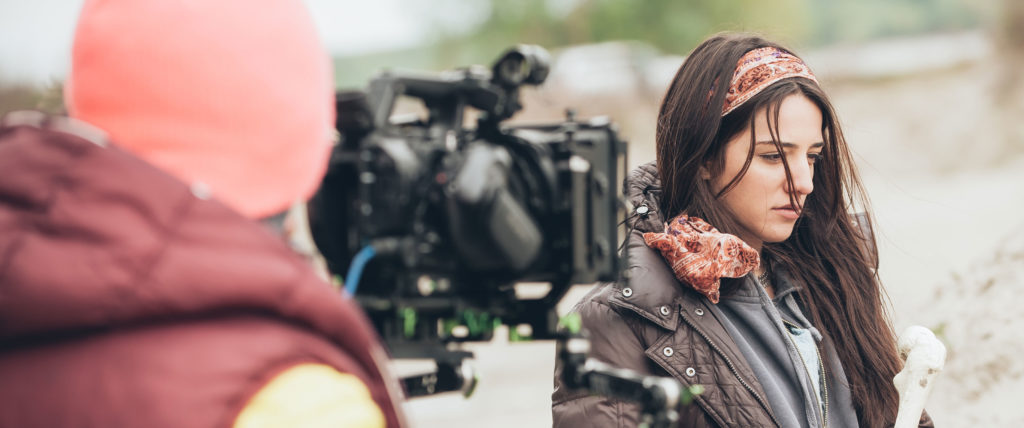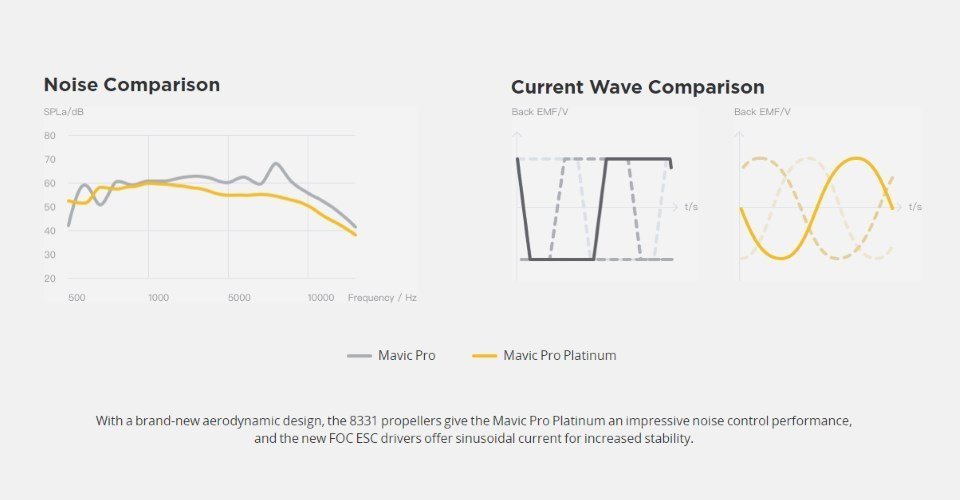
How to Find the Best 4k Drones
Whether you’re an indie filmmaker, a Hollywood pro, or a creative soccer parent, buying a 4K video drone will up your game in a major way. We have recommendations on the best 4K drones for quality, the best drones for a tight budget, and the most portable drones, all of which let you expand your horizons as you continue your journey with drone cinematography. No matter your experience level, you can start with a short rental and determine whether you’ll commit for the long-term.
CHOOSING THE VIDEO DRONE THAT’S RIGHT FOR YOU
There are tons of factors that impact your choice when renting or buying a video drone. Price is a very simple factor that can be reduced down to purchasing the most expensive drone you can afford, without any further consideration. If your budget is more flexible, though, lets examine four other factors to consider besides price: camera choice, size, video quality, and flying noise.
Finding the best drones for cinematography involves considering several factors to ensure that the drone you choose meets your specific needs and requirements. Here’s a step-by-step guide to help you find the right drone for cinematography:
- Define Your Budget: Drones for cinematography can range significantly in price. Determine how much you’re willing to spend, as this will narrow down your options.
- Camera Quality: The quality of the camera on the drone is paramount for cinematography. Look for drones with high-resolution cameras, preferably capable of shooting in 4K or higher resolution. Also, consider features like manual camera settings, RAW image capture, and image stabilization.
- Stability and Flight Performance: Smooth and stable flight is essential for capturing cinematic shots. Look for drones with advanced stabilization systems, such as gimbals, that help maintain steady footage even in challenging conditions.
- Flight Time: Longer flight times allow you to capture more footage without needing to recharge frequently. Consider drones with extended battery life or the option to swap out batteries easily.
- Range and Transmission Quality: A good drone for cinematography should have a reliable and long-range transmission system to ensure that you can control the drone and receive live video feed from a distance.
- Obstacle Avoidance: Some drones come with obstacle avoidance sensors to prevent collisions. This can be particularly useful when flying in complex environments.
- Portability and Travel Friendliness: If you plan to travel with your drone, consider its size and portability. Foldable or compact drones are easier to transport.
- Ease of Use: Look for drones with user-friendly interfaces and intuitive controls. This is especially important if you’re relatively new to flying drones.
- Software Features: Check for features like GPS-assisted flight, waypoint navigation, and different flight modes that can aid in capturing creative shots.
- Reviews and Recommendations: Read reviews and watch videos from reputable sources that specifically focus on drone cinematography. These resources can provide insights into real-world performance.
- Brand and Support: Established drone manufacturers often provide better support, warranty, and a wider range of accessories.
- Community and Compatibility: A strong user community can provide valuable insights, tips, and troubleshooting assistance. Also, ensure the drone is compatible with the software and editing tools you intend to use.
- Legal and Regulatory Considerations: Be aware of local regulations regarding drone usage for commercial purposes, including cinematography. Make sure you understand any licensing or permits you may need.
- Consider Second-hand Options: Depending on your budget, you might also explore the possibility of purchasing a high-quality used drone from a reputable source.
Always research thoroughly and choose a drone that aligns with your specific cinematography goals and requirements.
Camera Options and Video Quality
Back in the earliest days of drones, the kind you built yourself, no camera was included and you had to hack a point-and-shoot model to allow interval shooting of still images. We’ve sure come a long way: modern drones almost always include a camera, with the best models equaling the image and video quality of professional DSLR units. The Sony Airpeak S1 with Sony Alpha 7IV is one new and great drone. Fast speeds and fast stops to capture great movement. With obstacle avoidance sensors to keep the drone flying all the time.

The most flexible drones have camera ports on the bottom that allow you to swap out stabilized cameras, or even let you install a camera with an interchangeable lens mount. The Inspire 2 series, for example, has a bottom-mounted camera port that takes a wide range of options. The flagship model of camera, the Zenmuse X7, has a 24MP (Super 35 size) sensor capable of taking 6K video and supporting 4 different high-quality prime lenses. For maximal flexibility in post processing, the sensor has a phenomenal 14 stops of dynamic range and records in either CinemaDNG or Apple’s ProRes Raw codec. No matter which codec you choose, you’ll never lack for image detail when recording at up to 4.4 Gbps on the removable solid-state drive (SSD).
If you are ready to take it up a notch, the recent Inspire 3 with a full-frame sensor may be what fills the shoes. With a resolution of up to 8k at 75fps and 14 dynamic stops you will have a powerhouse in your hands.
The Inspire 3 is a professional camera drone that adopts a fluid new design that takes aerodynamics fully into consideration to reduce air resistance.
The max dive speed has increased from the 9 m/s of Inspire 2 to 10 m/s, while vertical ascend/descend speed has increased from 6 m/s and 4 m/s to 8 m/s.
Powerful maneuverability delivers responsive, accurate control and an extended flight time of up to 28 minutes.
The FPV camera, visual sensors, positioning antennas, and storage card slot all adopt designs that are seamlessly integrated into the airframe for a minimalist look and modern industrial aesthetics.
The Inspire 3 also integrates high-precision RTK positioning technology used in industries such as architecture and surveying to deliver centimeter-level accuracy. Compared with traditional meter-level positioning supported by Global Navigation Satellite Systems (GNSS), RTK not only makes flying more stable, but also makes flight-route planning more accurate, significantly improving creative efficiency.
Finally, if you don’t need to change cameras and aren’t worried about extensive color grading during post-processing, the Inspire 2 & 3 has several little brothers that can serve nicely including the Mavic 3 Flymore Bundle has a micro 4/3rds sensor, but in a full package that includes the drone and a controller.
Size
The DJI Air 2S has a similar unfolded size and flight time (30 minutes) to the old phantom series drones, but when folded it takes up a small fraction of the space, fitting easily into your backpack. The micro-sized controller holds a phone for live viewing while filming on your drone, and the 20MP sensor records 60Mbps 4K to give you stabilized footage comparable to the best cell phones. The Mini 3 Pro or the Mini 4 Pro keeps the format and controller, but the body is even smaller, fitting in a large pocket on your jacket. This tiny drone yields around 34-47 minutes per charge, but is so portable and convenient that it’s perfect for hiking or a dense urban environment.
If you need some confined space captures or some unique perspective, the DJI Avata FPV drone may be the one you want. 15-20 minute flights with some unique captures including indoor flying capabilities.
Noise
Of all the options and criteria in choosing the best drone for movies, you don’t often think of how loud a drone will be until you start flying. Fortunately, Most DJI drones now produce significantly less noise than most other video drones, this this is less of a problem.

With specially engineered motors and propellers, DJI Drones generates about 60% less overall noise power and has a tuned noise signature that makes it much more pleasing to the human ear.
Go Forth and Create!
No matter which drone you choose, the creative possibilities are endless. You’ll be able to find a great video drone for the simplest or most complex project, and the learning curve is easier than you’d think. Whether you need modular cameras and lenses, or a small quiet drone to record your daughter’s game-winning goal, each option we’ve discussed can be a great choice.
Aside from cameras and cinematography, even the aerial part is now simple. Thanks to obstacle avoidance sensors and sophisticated autonomous navigation modes, you can concentrate on capturing great drone video without worrying about flying. Get ready to unleash your inner filmmaker and rent a drone today!













